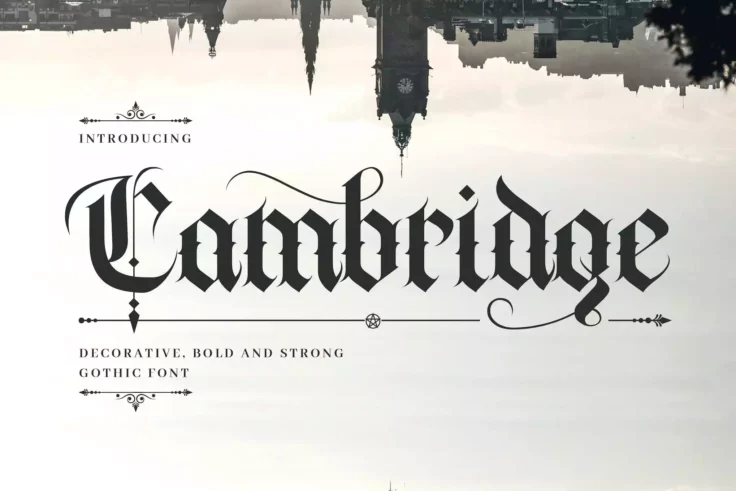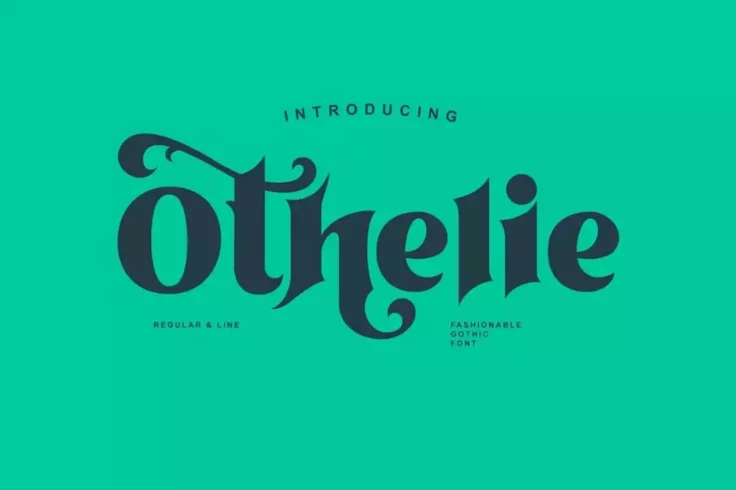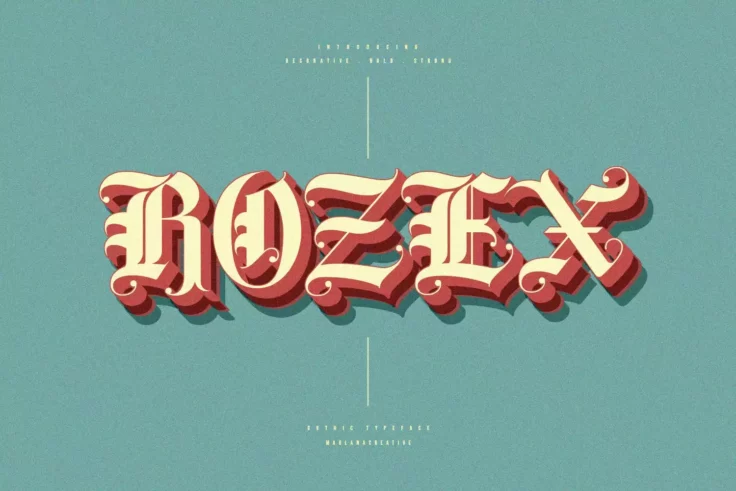15+ Best Medieval Fonts
Transport your designs back to the times of castles and knights with our medieval fonts. These fonts are perfect for fantasy designs, historical themes, or any project that requires a touch of the ancient and mysterious.

Cambridge Bold Medieval Gothic Font
Cambridge is a hand-lettering decorative font with a medieval gothic feeling. This font is suitable for a wide range of occasions, including books, lo...

Old Charlotte Decorative Gothic Medieval Font
Old Charlotte is a bold and decorative gothic font that captures the essence of a bygone era. Designed with horror-themed projects in mind, Old Charlo...

The Ancient Medieval Decorative Font
Another bold medieval decorative font with strong characters. This font is most suitable for designing big titles for posters, YouTube videos, movies,...

Nightingale Vintage Medieval Font
Nightingale is another beautiful medieval font that takes a stylish vintage approach to its letter design. This font has a set of decorative gothic-st...

Raven Hell Textura Medieval Font
This is a medieval font family that comes with 6 different styles of fonts for you to choose from. It has fonts with thin lines to thick bold letters ...

Othelie Fashionable Medieval Font
A big bold medieval font for crafting big titles for your designs. This font is perfect for designing titles for posters and banners that can be seen ...

Ring of Kerry Irish-Style Medieval Font
At first glance, this font will remind you of the typeface used in Lord of the Rings movies. But the true inspiration behind this font design comes fr...

Serkan Celtic Medieval Font
Another medieval font inspired by Celtic typography. This font features very stylish letters that look a lot like characters out of an old papyrus. It...

Kingvoon Medieval Business Font
Kingvoon is a creative medieval font you can use with your professional design projects. It adds that classic medieval look to typography while mainta...

Livingstone Medieval Blackletter Font
Livingstone is a blackletter-style font that features a set of letters with medieval-themed designs. This font will allow you to design bold headings ...

Bahisy Blackletter Medieval Font
Featuring a classic blackletter design this medieval font allows you to craft stylish T-shirts, flyers, product labels, and signage for many different...

England Classic Medieval Font
Inspired by typography from the medieval age, this font puts a modern spin on the letter design to create a unique look for this typeface. It has a co...

Black Baron Bold Medieval Font
Black Baron is a classic medieval font with bold letters and decorative elements. You can use it to craft big titles for your product packaging design...

King Castle Celtic Medieval Font
Kind Castle is a medieval font inspired by Celtic typography styles. It has a friendly and casual letter design that makes the font a great choice for...

Rozex Bold Medieval Gothic Font
Rozex is a bold and decorative font with a medieval gothic touch. Its unique hand lettering style makes it a perfect choice for a wide range of profes...

Fancy Quisley Blackletter Medieval Font
This is a decorative blackletter font with a medieval-style letter design. You can use it to design bold titles for posters, product packaging designs...

Odd Times Medieval Calligraphy Font
Odd Times is a classy medieval calligraphy font that features blackletter-style characters. This font also uses beautiful brush-style strokes that giv...

Astral Medieval Display Font
Astral is an all-caps display font that includes a set of unique medieval-style letters. It has the perfect look for designing logos for luxury brands...
FAQs About Medieval Fonts
What are Medieval Fonts?
Medieval fonts, also known as gothic or blackletter fonts, are typefaces that were used during the Middle Ages, typically between the 11th and 15th centuries. These fonts are characterized by their ornate design, thick strokes, and complex details, which gives them a distinctive, old-world appearance.
The style of writing they represent was prevalent in Western Europe and was used in various forms of writing, ranging from religious scriptures to legal contracts. The fonts can give your text a historical, classical, and somewhat austere look and feel, evoking a sense of antiquity and tradition.
What are the Different Types of Medieval Fonts?
Medieval fonts are not monolithic and actually consist of several different styles or families. One of the most well-known is Blackletter, which is often associated with the Germanic nations of the medieval period and is characterized by its dense, dark character. Other popular medieval font families include Textura, Rotunda, Schwabacher, and Fraktur, each with its own unique characteristics and uses.
For instance, Textura fonts were used for large volumes like Bibles, while Rotunda was the preferred style for more detailed scientific and scholastic works. Schwabacher and Fraktur were popular in Germany and other parts of Northern Europe and have a distinctive broken or fractured appearance.
When Should I Use a Medieval Font?
Medieval fonts can be used in any context where you want to evoke a sense of history, tradition, or authenticity. They are often used in things like restaurant menus, wedding invitations, certificates, or book covers, especially those related to historical or fantasy genres.
However, due to their complex, ornate design, medieval fonts can be hard to read, particularly in large blocks of text. For this reason, they're generally used for headings, titles, or short pieces of text rather than for body copy. They work best when combined with cleaner, simpler fonts that aid readability.
How Can I Install and Use Medieval Fonts?
Once you've downloaded a medieval font file, usually in .ttf or .otf format, you can install it on your computer by opening the file and clicking the 'install' button. On a Mac, you can use Font Book to install and manage your fonts, while on Windows, you can use the Fonts control panel.
Once installed, the font should be available for use in any program that allows you to select fonts, such as word processors, graphic design tools, or website builders. Simply select the font from the font menu in your software, and start typing in your medieval style.
Are Medieval Fonts Copyrighted?
Fonts are usually protected by copyright, so it's important to make sure you have the right permissions to use a particular font. Some fonts may be free to use for personal use, but require a commercial license if you're using the font for business purposes.
Always check the license agreement for a font before you download and use it. Many font designers and distributors make their licensing terms available on their website or include them with the font file. If you're unsure, it's best to contact the designer or distributor directly for clarification.